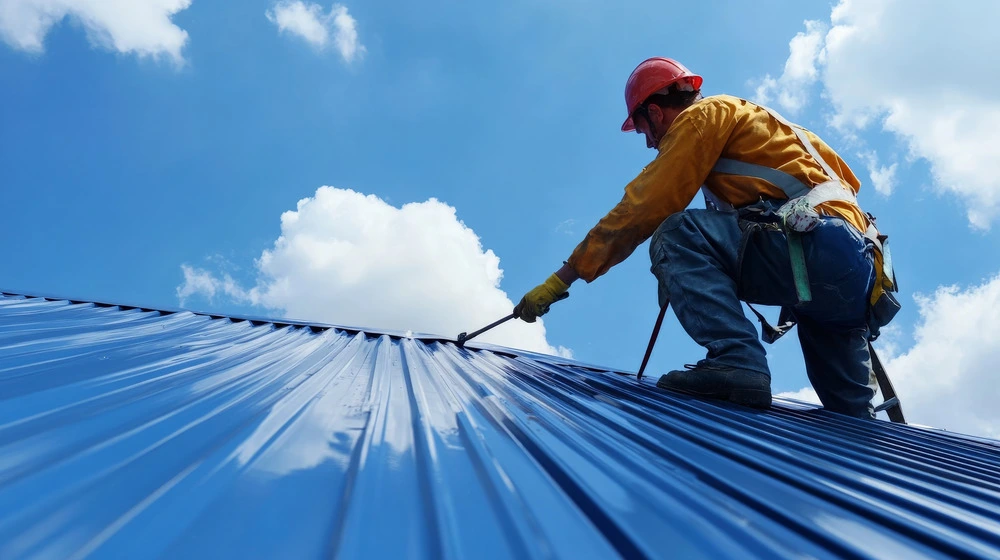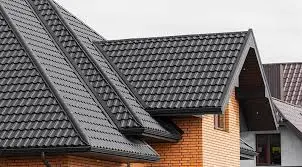Chimney flashing is one of the most vital yet often overlooked components of a roofing system. It serves as the primary waterproofing barrier that seals the joint between the chimney structure and the surrounding roof surface. Without properly installed flashing, this connection point becomes highly vulnerable to water penetration — one of the most common causes of roof leaks and long-term structural damage. The flashing’s main purpose is to direct water away from the seam where the chimney meets the roof, preventing rain, melting snow, and ice from seeping into the home’s interior.
Because chimneys extend through the roofline, they naturally create weak points in the roofing system. Over time, exposure to harsh weather conditions, temperature fluctuations, and normal wear can cause the flashing to loosen, corrode, or crack. When this happens, even small gaps can allow moisture to infiltrate beneath the roofing materials, leading to serious issues such as attic leaks, wood rot, mold growth, and compromised insulation. In severe cases, neglected chimney flashing can cause damage to drywall, ceilings, and even the structural framing of the home — resulting in costly repairs that could have been avoided with timely maintenance.
A well-installed chimney flashing system acts as a long-term defense against these risks. It creates a watertight seal around the chimney base and channels water safely away from the roof’s surface. Professional roofing contractors typically use durable materials such as galvanized steel, aluminum, or copper, chosen for their corrosion resistance and longevity. Each material offers unique advantages:
- Aluminum flashing is lightweight, affordable, and easy to shape for precise fitting.
- Galvanized steel provides excellent durability and strength, ideal for areas with heavy rain or wind.
- Copper flashing, while more expensive, offers unmatched longevity, natural resistance to corrosion, and a classic aesthetic that complements many architectural styles.
To ensure maximum performance, the flashing should be paired with high-quality sealants and proper step flashing techniques, which overlap each layer to create a seamless, watertight bond. This meticulous installation process is crucial for preventing capillary action — the tendency of water to creep upward between surfaces — and for maintaining a tight seal through years of weather exposure.
Routine inspection and maintenance of chimney flashing are equally important. Homeowners should look for telltale warning signs such as rusted metal, separated seams, missing caulk, or water stains on interior ceilings or walls near the chimney. Early detection allows small problems to be fixed before they escalate into major repairs. Ideally, flashing should be checked at least once a year, or after severe storms, as part of regular roof maintenance.
In essence, chimney flashing may be a small part of the roofing system, but its role is critical to the overall integrity and longevity of your roof. By investing in quality materials, professional installation, and routine inspections, homeowners can safeguard their property from water damage, extend the lifespan of both the roof and chimney, and maintain a dry, comfortable, and structurally sound living environment.
“Strong flashing, dry home, and peace of mind.”

Recognizing the warning signs of chimney flashing damage is essential to preventing serious water-related problems in your home. Since flashing serves as the roof’s key defense at one of its most vulnerable junctions, even minor issues can quickly escalate if left unattended. Common indicators that chimney flashing may need repair include visible water stains or discoloration near the chimney, leaks on the interior ceiling, or damp patches on adjacent walls. You might also notice loose, bent, or corroded metal, cracked caulking, or missing sealant where the chimney meets the roof. In colder climates, recurring frost or ice buildup in this area can be another sign that moisture is penetrating through small gaps in the flashing.
When these early warning signs appear, it’s important to act quickly. Prompt repairs can prevent small leaks from developing into major structural issues such as rotting roof decking, mold growth, or interior water damage. Delaying maintenance not only increases repair costs but may also lead to the need for a full flashing replacement if deterioration spreads. In some cases, roofing professionals may apply additional waterproof membranes or sealant layers to reinforce existing flashing, enhancing its resistance to moisture and prolonging its service life.
A professional inspection and repair are crucial to ensure long-term protection. Skilled roofers will carefully assess whether the existing flashing can be repaired or must be replaced, then install or restore it using proper techniques that account for roof pitch, chimney size, and surrounding materials. The flashing must integrate seamlessly with the shingles, underlayment, and mortar joints, forming a continuous, watertight barrier that directs water away from the chimney base.


